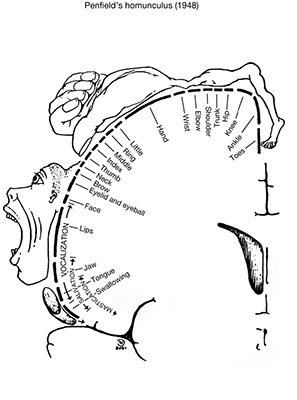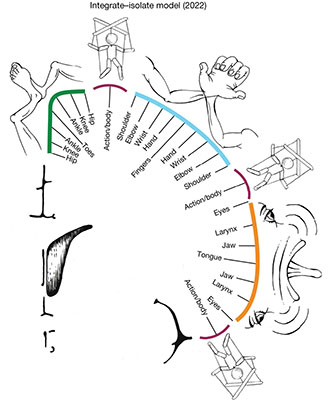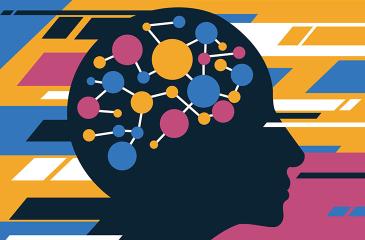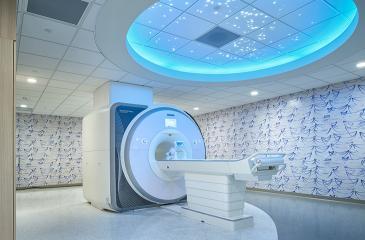U of M Researchers Discover New Brain Functions That Will Change Neuroscience Fundamentals
For more than 80 years, scientists have relied on the brain map — called the homunculus — to understand which areas of the brain control each body part. A new study published in Nature that included researchers from the University of Minnesota has identified previously unknown areas of the brain that could help scientists better understand and treat brain conditions including movement disorders, pain, anxiety and more.

The homunculus — which means “little man” in Latin — is a visualization of the human body that reflects the comparative space each body part takes up in the brain’s cortex. The model reflects that some groupings of neurons that represent the moveable parts of the body, such as hands or feet, take up a higher volume of room in the brain than their physical size does on the body. Since the model was first posited in the 1930s, it’s been a foundational concept in neuroscience that has informed work on neurological conditions such as phantom sensation in amputated limbs and motor and sensory stroke symptoms.
In the study, scientists including those from the University of Minnesota’s Masonic Institute for the Developing Brain (MIDB) aimed to describe the homunculus in more detail using precision functional mapping, which is a technique used to identify areas in the brain that control specific functions. While their work did locate the separate regions that controlled the movements of the foot, hand and face, they found much more than what the traditional homunculus model displays.
The research team used functional magnetic resonance imaging (fMRI) to measure changes in blood flow that occur with brain activity on individuals while they were resting or moving different parts of the body along with large data sets from previously scanned individuals, which includes the Adolescent Brain Cognitive Development Study (3,900 participants), the Human Connectome Project (812 participants) and the UK Biobank (4,000 participants). Data resources and processing pipelines supported by MIDB in close collaboration with the Center for Magnetic Resonance Research supported this work.
In the study:
- Researchers discovered three additional areas interspersed between the already-known regions (such as those for feet, hands and the face) which were strongly connected with each other and connected to other parts of the brain responsible for goal-driven action planning and other tasks, such as regulating blood pressure and pain.
- The interspersed regions were not specific to any one body part or movement and were activated during action planning.
- While the new network was not detectable in a human newborn, it was in an 11-month-old child, and was almost adult-like in a 9-year-old child.
“The discovery here is remarkable,” said Damien Fair, PA-C, PhD, one of the study’s authors and Redleaf Endowed Director for the MIDB. “Every textbook on the planet that describes the organization of the brain will need to change, starting today.”

The three newly discovered regions comprise what is now called the somato-cognitive action network (SCAN), and disrupts the common view of the motor homunculus. Importantly, SCAN’s connectivity to important high level brain systems highlights the brain’s role in everything from coordinating motor actions to modulating and coordinating actions in our body organs, such as the heart and stomach.
“The implications for the findings also have broad reach and will inform treatments in disorders of aging, like Alzheimer's and Parkinson's disease, to mental health disorders in development,” said Fair. “It is a very good day for team science and the MIDB is proud to have contributed, supported and been a critical piece in this discovery.”



